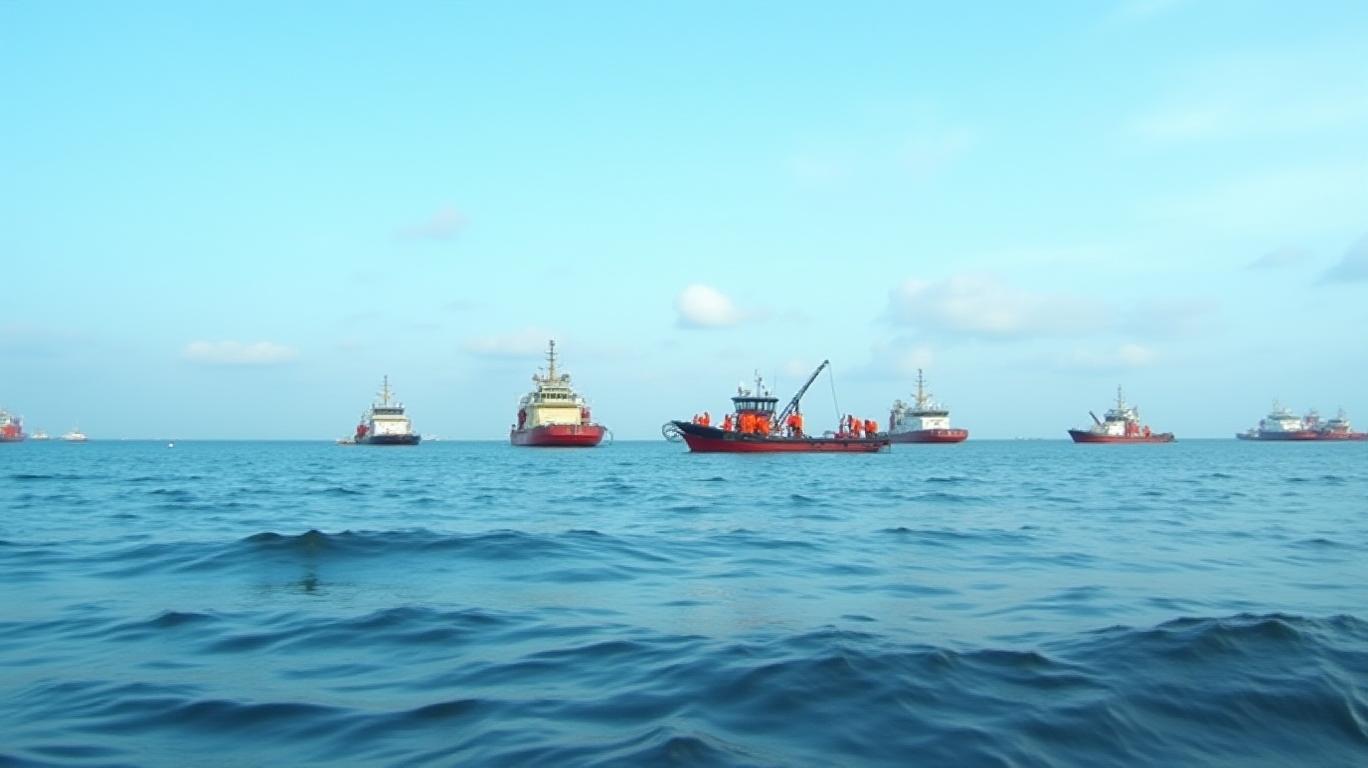Tidewater Inc. Navigates Regional Headwinds with Strong Q1 Performance
Tidewater Inc. (TDW) delivered a robust first-quarter 2025 earnings report, exceeding market expectations on both revenue and profitability. Despite regional market challenges, the offshore support vessel operator demonstrated financial resilience through record day rates, disciplined capital allocation, and a diversified global footprint.

Key Financial Highlights
- Revenue: $333.4 million, a 2.8% beat over estimates, driven by a 7% sequential rise in average day rates to a record $22,303.
- Gross Margin: Held steady at 50.1%, reflecting operational efficiencies and fleet modernization.
- Adjusted EBITDA: Increased to $154.2 million, up from $138.4 million in Q4 2024.
- Free Cash Flow: $94.7 million, slightly below Q4’s $107 million due to elevated drydock and capital expenditures.
Operational Strengths and Strategic Priorities
- Record Day Rates and Utilization: The company’s ability to secure higher rates in key markets like Brazil and the Middle East, coupled with reduced idle days, underscored its pricing power. Utilization improved to 78.4%, a 1.6% sequential increase.
- Share Repurchases: Tidewater spent $97 million to repurchase 2.5 million shares, reducing its share count and signaling confidence in its valuation.
- Fleet Modernization: Despite higher drydock costs, investments in vessel upgrades position the fleet to meet rising demand for subsea construction and FPSO support services.
Regional Performance and Risks
- Brazil: A standout performer, with Petrobras tendering for 18 large offshore support craft (OSVs). This could tighten supply in the North Sea as vessels relocate, potentially boosting day rates there.
- North Sea/UK: Facing near-term demand softness, though the region’s rates remain historically strong.
- Mexico: A $35.1 million receivable from a primary customer remains unresolved, though Tidewater has not yet recorded a write-off.
- Middle East/Africa: Steady performance, with Angola, Congo, and Ivory Coast markets showing growth.
Challenges and Risks
- Geographic Volatility: Pemex’s underfunding in Mexico and North Sea seasonality could dampen Q2 results.
- Capital Expenditures: Drydock costs rose by $30 million sequentially, reflecting necessary maintenance.
- Debt Constraints: Nordic bond terms limit shareholder distributions to 50% of trailing net income, restricting buybacks until refinancing.
Outlook and Investment Thesis
Tidewater’s 2025 guidance ($1.32–$1.38 billion revenue) is achievable given its 88% firm backlog and options. While Q2 is expected to see a 5% revenue dip due to seasonal factors, margins should rebound in H2 as utilization improves.
Conclusion
Tidewater’s Q1 results affirm its status as a disciplined operator in a cyclical industry. With a Piotroski score of 9—a near-perfect indicator of financial health—and a stock price up 10.55% post-earnings, the company appears well-positioned to capitalize on long-term offshore energy trends. Key catalysts include Brazil’s tender activity, subsea construction growth, and attrition of older vessels, which could tighten supply by 2026.
However, investors must monitor Mexico’s receivable issue and regional demand volatility. For those willing to look past short-term headwinds, Tidewater’s strong cash flows, $2.14 billion market cap, and strategic share buybacks make it a compelling play on a sector poised for recovery.
In summary, Tidewater’s blend of financial discipline, geographic diversification, and industry tailwinds positions it to outperform peers—if it can navigate near-term risks and sustain momentum in high-growth markets.

Comments
No comments yet